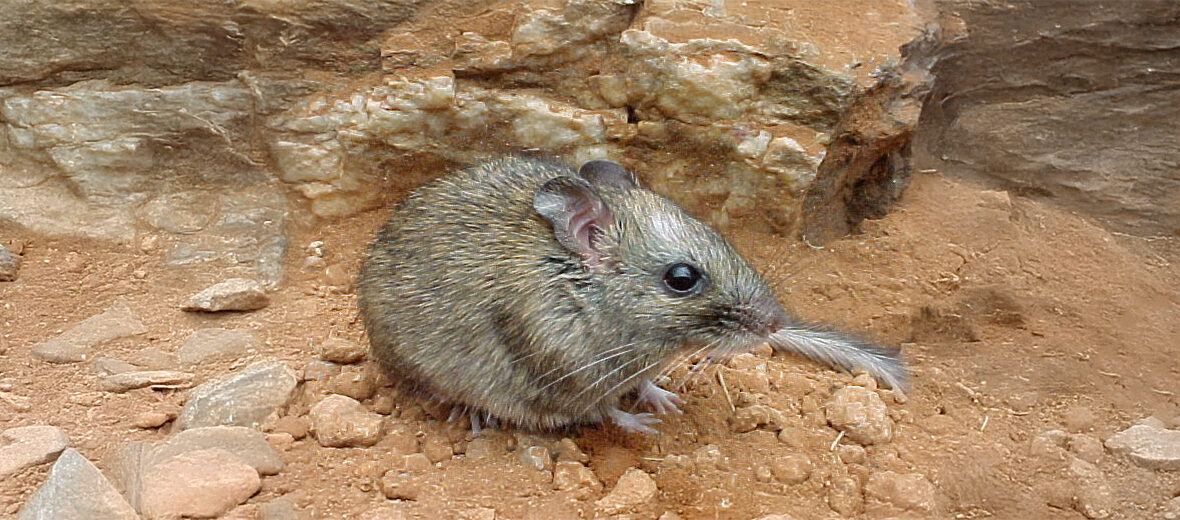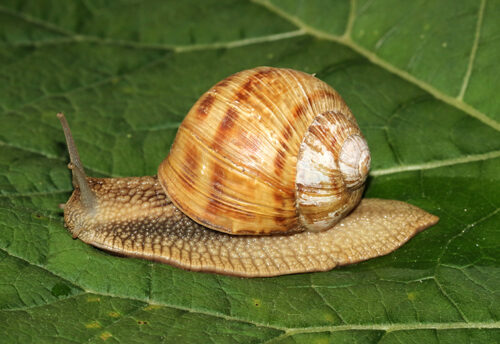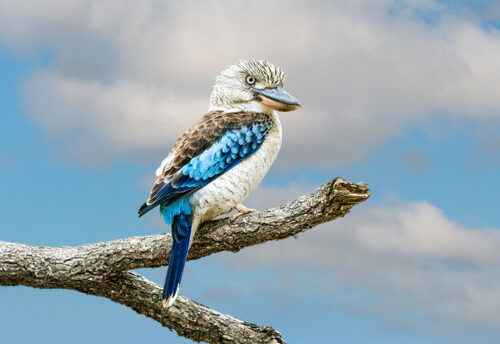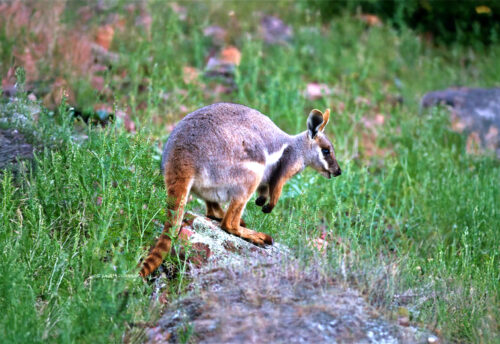
The central rock-rat, aka Australian native mouse, central thick-tailed rock-rat, and Macdonnell Range rock-rat, hails only from Australia. They are 1 of 5 rock rat species native to Australia. These rodents face the threats of habitat loss and destruction at the hands of the overgrowth of weeds, fires, and mismanaged fire suppression; invasive species, in the form of feral dogs, cats, and also red foxes that prey on these rodents; and climate change, that causes severe droughts. The IUCN lists these rodents as Critically Endangered. Their population trend is also listed as decreasing.
First the Stats…
Scientific name: Zyzomys pedunculatus
Weight: Up to 4.2 ounces
Length: Up to 5.9 inches, plus up to a 6 inch tail
Lifespan: Up to 7.5 years
Now on to the Facts!
1.) These rats are nocturnal (active at night).
2.) They were first described by E.R. Waite in 1896.
3.) Central rock-rats are known to engage in caudal autonomy (able to lose their tail), as well as lose fur, when captured. This makes handling them very difficult.
4.) The central rock-rat prefers to dwell among rocky outcrops and mountainsides with loose stones, as well as hilly grasslands and low open shrublands or woodlands.
5.) They’re only found in a 48 mile stretch located in the West MacDonnell Ranges, in the Northern Territory.
But wait, there’s more on the central rock-rat!
6.) This species was thought to be extinct in both 1990 and in 1994 due to population decline. In 2001 individuals were trapped from 14 locations, but in 2002 droughts and wildfires struck the area and this species was not recorded after that.
7.) Females undergo up to a 24 day gestation (pregnancy) that yields up to 4 pups.
Did you know…?
There are only an estimated 800 wild individuals remaining.
8.) Having a preference for seeds from grasses of the genus Triodia, these rats are primarily granivores (eat seeds). However, they will also feast on the occasional insect.
9.) They are heavily dependent upon the availability of grasses and long periods absent of fires. The more available grass, the greater the populations. This explains why their numbers increase during periods of rainfall.
10.) A national recovery plan through the Australian Government is in place, with the overall objective being to stabilize the species and prevent population decreases. Objectives include: clarifying distribution, population size, and habitat; creation and employment of management strategies of the sub-populations; maintaining captive populations; investigating the biology of captive individuals; and increasing awareness in the community.
But wait, there’s more on the central rock-rat!
11.) In 1996, after the re-discovery of these rats, a captive breeding program was initialized at Alice Springs Desert Park and at the Perth Zoo. After initially introducing 14 individuals from the wild, the first generation bred successfully however the subsequent generation eventually lead to the death of the last male in 2011.
12.) The National Recovery Plan for central rock-rats in 2017 tried to create another breeding program during a natural irruption phase of the wild population, for instance after the heavy rainfall in the winter of 2016, so as to limit the effects on the wild numbers of this species.
Now a Short Central Rock-Rat Video!
Be sure to share & comment below! Also, check out the Critter Science YouTube channel. Videos added regularly!

Want to suggest a critter for me to write about? Let me know here.
Some source material acquired from: Wikipedia & IUCN
Photo credit: Michael Barritt & Karen May



